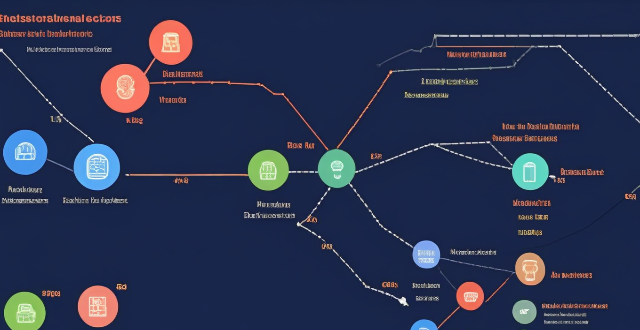The article explores various reasons for fluctuations in network latency, including network congestion due to high traffic volume, large file transfers, and server load; physical distance and infrastructure issues related to geographical location, network hardware, and ISP differences; and local network conditions such as wireless interference, multiple devices sharing bandwidth, and malware or viruses affecting performance. It suggests ways to minimize latency fluctuations, like upgrading equipment, optimizing Wi-Fi setup, scheduling large downloads during off-peak hours, using wired connections, and scanning for malware.

Why Does My Network Latency Fluctuate Throughout the Day?
Network latency, also known as ping or lag, is the delay between the transmission of a data packet and its receipt. It's a crucial factor in online gaming, video streaming, and other real-time applications. However, many users experience fluctuations in their network latency throughout the day. In this article, we will explore some possible reasons for these fluctuations.
Network Congestion
One of the most common causes of fluctuating network latency is network congestion. This occurs when too much data is being transmitted over the network at once, causing delays in packet delivery. The following are some factors that can contribute to network congestion:
* High traffic volume: During peak hours, such as evenings or weekends, more people are using the internet, which can lead to increased traffic and congestion.
* Large file transfers: Downloading or uploading large files, such as videos or software updates, can consume significant bandwidth and cause delays for other users on the same network.
* Server load: If a server is experiencing high traffic or running resource-intensive applications, it may take longer to process requests and respond to clients.
Physical Distance and Infrastructure
The physical distance between your device and the server you're connecting to can also affect your network latency. Additionally, the quality of the infrastructure used to transmit data can play a role in latency fluctuations. Here are some related factors:
* Geographical location: Connecting to servers located far away from your location can result in higher latency due to the increased distance that data needs to travel.
* Network hardware: Older or poorly maintained networking equipment, such as routers or switches, may not be able to handle modern internet speeds efficiently, leading to performance issues.
* Internet Service Provider (ISP): Different ISPs have varying levels of infrastructure and technologies, which can impact the consistency and reliability of your connection.
Local Network Conditions
Your local network environment can also influence your network latency. Some factors include:
* Wireless interference: Wireless networks can experience interference from other electronic devices or even neighboring Wi-Fi networks, causing signal degradation and increased latency.
* Multiple devices: Having many devices connected to the same network can lead to bandwidth sharing, potentially reducing the overall speed and increasing latency for each device.
* Malware or viruses: Malicious software on your device or network can consume resources and bandwidth, negatively affecting your network performance.
How to Minimize Latency Fluctuations
While it's impossible to eliminate latency entirely, there are steps you can take to minimize its impact on your activities:
1. Upgrade your equipment: Ensure that your router and other networking gear are up-to-date and capable of handling your desired internet speeds.
2. Optimize your Wi-Fi setup: Place your router in a central location, away from obstructions and electronic devices that could cause interference.
3. Schedule large downloads: Plan large file transfers during off-peak hours to avoid contributing to network congestion during peak times.
4. Use wired connections: Where possible, use Ethernet cables instead of Wi-Fi for a more stable connection with lower latency.
5. Scan for malware: Regularly scan your devices for viruses or malware that could be affecting your network performance.
By understanding the potential causes of fluctuating network latency and taking proactive measures to address them, you can help ensure a smoother online experience throughout the day.